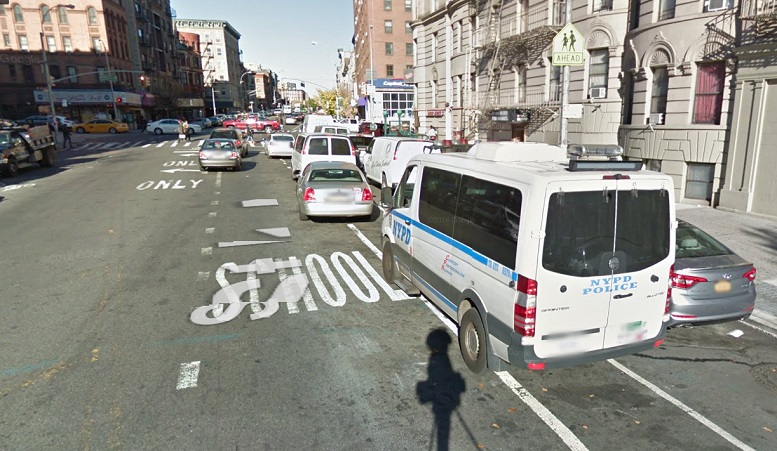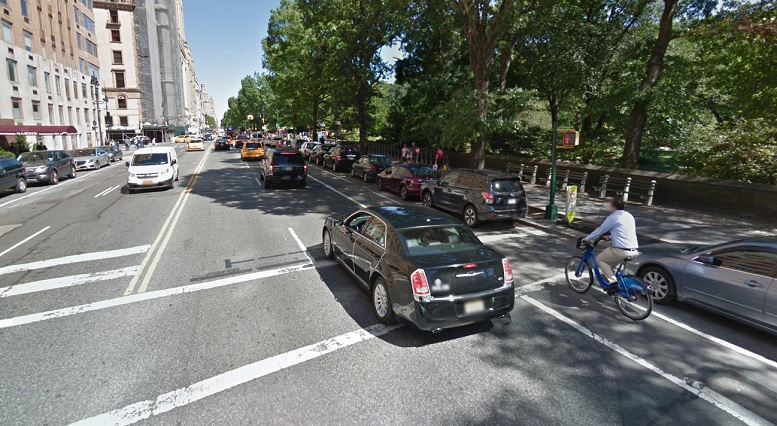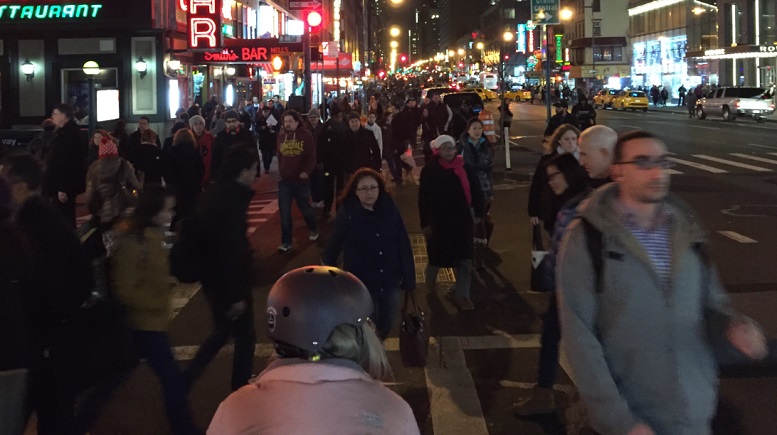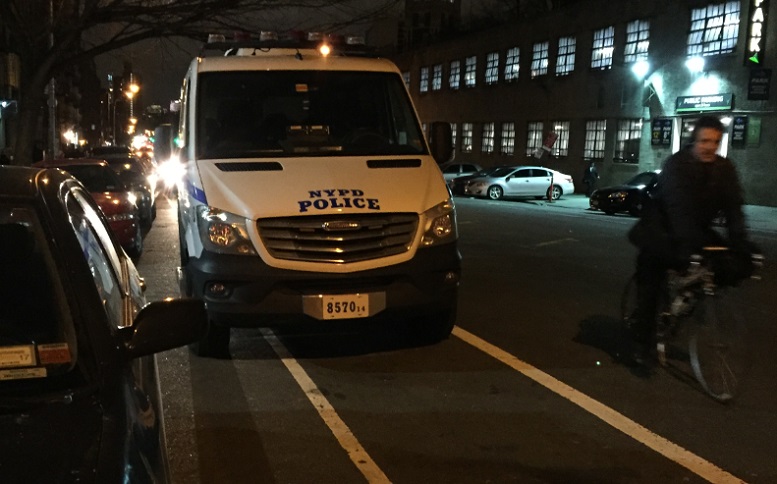In 1996, the New York City Department of Transportation marked a pair of painted bike lanes on St. Nicholas Avenue from 168th Street in Washington Heights to 116th Street in Harlem.
A few years later, the city extended this route by painting bike lanes along Central Park West, connecting to St. Nicholas via Frederick Douglass Boulevard.
Then in 2008, NYC DOT began installing a parking-protected bike lane — a novel idea at the time — on Eighth Avenue from below 14th Street, through midtown Manhattan, and finally reaching Columbus Circle in 2012.
The result was a continuous marked bike route from the West Village to Washington Heights, but portions of the route today are becoming obsolete. The increasing popularity of cycling in New York City and the evolution of bikeway design suggest that it’s time these lanes got a fresh look.
Start with the painted bike lanes on St. Nicholas Avenue, which are plagued with double parked cars and delivery vehicles. While physically-separated bike lanes would prevent this practice, such a change would require a full reconfiguration of the right of way, likely omitting left turn lanes or some on-street parking. Better enforcement is the key, but it’s hard to believe the NYPD will crack down on double parking when they’re some of this neighborhood’s most prolific parking scofflaws.

The bike lane on bi-directional Central Park West is particularly infuriating not only because there’s only a bike lane on the uptown side, but also because this seems to be a missed opportunity to install a two-way cycle-track, like what NYC DOT installed on Prospect Park West. Protected two-way cycle tracks are in the works for 111th Street alongside Flushing Meadows Corona Park in Queens and on Broadway alongside Van Cortlandt Park in the Bronx. Why not Central Park too?

Both the St. Nicholas and Central Park West bike lanes suffer from the classic issues with painted lanes. Although they designate a space for cyclists, they provide a meager sense of protection from moving traffic, illegal parking and car doors. It’s no wonder why protected lanes are seven times more effective than basic painted lanes.
But protected lanes are only as good as the streets they’re installed on. Take the Eighth Avenue bike lane, which is practically useless in midtown because it’s become a de facto extension of the sidewalk. A decade ago, this bike lane was on the cutting edge, but it’s clear today that pedestrians need more space on the west side of the avenue. Eighth Avenue in midtown Manhattan has four lanes for moving cars and one for storing cars. Can NYC DOT widen the sidewalk and re-purpose one of those lanes for bikes? That might seem outrageous to some, but consider the fact that less than a quarter of Manhattan households own a vehicle.

New York has already taken the first steps to upgrade some of its older bike infrastructure: the painted bike lanes on Sixth Avenue have been converted to protected lanes, and DOT announced this month that they will add protection to the Fifth Avenue lanes as well. Now that the bike lane on Eighth Avenue has been with us for almost 10 years, and the Central Park West and St. Nicholas Avenue lanes have been with us for nearly 20, isn’t it time they got another look?
Mobilizing the Region is published by the Tri-State Transportation Campaign, a 501(c)(3) non-profit policy advocacy organization. If you’d like to support our work, please make a tax-deductible donation today.


[…] Tri-State: Time to Refresh the Bike Lanes on St. Nicholas Avenue and Central Park West […]
Totally agree, but we also need to solve the double-parking problem on CPW. Get rid of curb parking along CPW in front of buildings; make it for drop-off and pick-up only with a 1 minute-standing limit. Or meter it at $10.00 per 15 minutes.
On the park side of CPW, if there is going to be a parking lane protecting the bike lane, price the curb spots HIGHER than the average neighborhood garage spot. With apartments selling in the millions or tens of millions of dollars, people can afford to pay for their contractors and repair workers to park to reach these apartments.
Make CPW 2-3 lanes instead of four, and there will be room for a protected path against the park. Would do wonders for biking in the neighborhood.
it appears the general traffic lanes have nice pavement. Perhaps cyclists can use those?